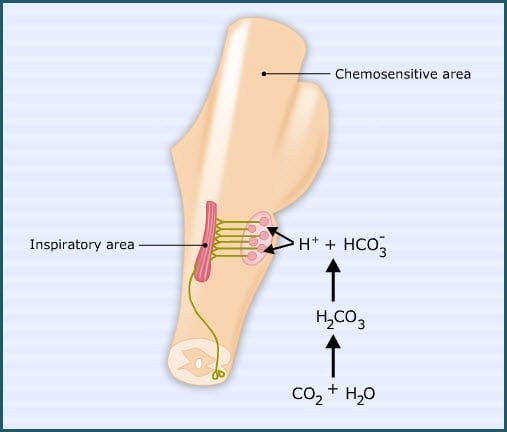TABLE OF CONTENTS
Physiology of Brain stem
Brain stem is the group of CNS structures continuous with the spinal cord. It forms a vital link between the spinal cord and higher centres of the brain. It comprises of medulla oblongata and pons that controls many of the life sustaining process and baseline activities of skeletal muscles. These comprise of caudal most portion of the brainstem. It maintains relationship with fourth ventricle.
Difference exists in the distribution of the white and grey matter in the brainstem. Grey matter of brainstem is represented by nuclear group separated from each other by fiber system.
Largest representation of the brainstem is the reticular structures namely the brainstem reticular formation. This extends from anterior end of the spinal cord to thalamus and hypothalamus. This system controls the consciousness and perception, motor and sensory activity of an animal.
Nuclei of brain stem
Nuclei of brain stem are associated with cranial nerves and are organized into columns, representing different functional types. They are three motor columns (somatic, visceral, and branchial motor columns) and two sensory motor columns (somatic and visceral sensory systems).
Somatic motor column is placed in the dorsomedial position of the brainstem. It consists of α-motor neurons. These neurons supply the muscles of head, extrinsic muscles of eye, and muscles of tongue.
Visceral motor column contains neurons similar to the intermediolateral cell column of the thoracic and lumbar spinal cord. They supply fibers to the intrinsic muscles of the eye, vagal fibers to the cervical, thoracic, and abdominal regions.

Branchial motor column is located ventrolateral to the somatic sensory column and are similar to the α-motor neurons of the somatic motor column. They supply motor fibers to the skeletal muscles of mastication, facial muscles, and muscles of larynx, pharynx, and trapezius.
Somatic sensory column consists of neurons of sensory fibers of trigeminal nerve supplying to head and face. As they function to innervate muscle spindle of the cheek muscles, they are responsible for control of muscle tone of masticatory muscles and reflex control of chewing. These neurons are responsible for perception of delicate tactile sensation, pain, and temperature in the areas of head and face are processed via the nucleus gracilis and nucleus cuneatus.
Visceral sensory column is represented by a single nuclear structure at the medulla and is known as nucleus of fasciculus solitarius. Sensory information from mouth, pharynx, larynx, thoracic, and abdominal viscera are received by this via visceral afferents of vagus and glossopharyngeal. This nucleus relays taste afferents within the facial, glossopharyngeal, and vagus nerves.
Other nuclei of brainstem
These nuclei serve as relay of sensory or motor functions. and cerebral cortex are also received by these nuclei as a part of messaging system of CNS to the cerebellum for the control of somatic motor activity.
Nucleus gracilis and nucleus cuneatus lie within the medulla and relay sensory information of tactile and kinesthetic sense of joint to higher centres of the brainstem. Fibers of this nucleus at the medullary level form medial lemniscus by arching and decussating to the opposite side and terminate within thalamus.
Accessory cuneate nucleus forms relay nuclei for tactile, joint angle, and muscle stretch of areas of neck via the spinocerebellar tract. These nuclei lie lateral to nucleus gracilis and cuneatus.
Caudal olivary nuclear complex is similar to the accessory cuneate. They receive neural information from spinal cord and project them to the cerebellum. Fibers from basal ganglia
Pontine grey matter lies within pons and serve to relay information for pontocerebellar fiber system to control somatic motor activity. Nerve fibers of this decussate to form Brachium Pontis, third peduncle in the cerebellum.
Red nucleus is a prominent somatic motor nucleus of midbrain. Midbrain comprises of structures concerning auditory and visual relay system. This nucleus receives sensory fibers from cerebellum, motor cortex, globus pallidus, thalamus, vestibular nuclei, and brainstem reticular nucleus and give rise to RUBROSPINAL TRACT to control somatic motor activity by ending in the internuncial neurons to excite somatic and visceral motor neurons of the spinal cord.
Central group of nuclei and Lateral group of nuclei -These two nuclei contain respiratory and cardiac centres.